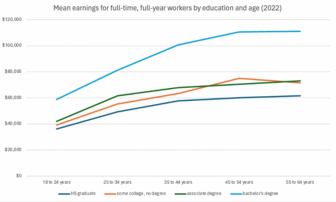My last post looked at the top 10 states for private sector employment earnings (both wages and employer paid benefits) per capita. The component of per capita income that everyone wants and should be the goal of state and local economic development policy. In this post we look at the bottom 10 states on the metric. Here are the bottom 10:
|
State |
Private Sector Employment Earnings Per Capita |
% with four-year degrees or more |
% of per capita income from government revenue |
|
Mississippi |
$14,732 |
19.6% |
42.9% |
|
West Virginia |
$16,222 |
17.3% |
42.6% |
|
New Mexico |
$16,645 |
25.3% |
41.2% |
|
South Carolina |
$16,757 |
24.3% |
38.6% |
|
Arkansas |
$17,131 |
18.9% |
37.6% |
|
Idaho |
$17,533 |
23.9% |
32.3% |
|
Alabama |
$17,626 |
22.0% |
38.1% |
|
Montana |
$17,702 |
27.3% |
35.4% |
|
Kentucky |
$17,875 |
20.1% |
39.9% |
|
Arizona |
$18,656 |
25.6% |
33.0% |
|
United States |
$23,427 |
27.9% |
31.2% |
So what can Michigan learn from the top and bottom 10 states in terms of growing per capita income (a top priority for both Governor Snyder and Business Leaders for Michigan)? First is that the key is growing private sector employment earnings per capita. Something Michigan has not done for two decades. That has to change. And to do that the data are clear we need both to get better educated (particularly the proportion of adults with a four-year degree or more) and get more concentrated in the growing and high wage knowledge-based sector of the American economy. Those two characteristics, and not adherence to a low cost/small government/anti-union agenda, are the keys to growing per capita income.
Connecticut is ranked 40th and Mississippi 17th in the Tax Foundation’s new State Business Climate Index. Mississippi is a right to work state, Connecticut is not. So the prevailing ideology would predict that private sector employment earnings per capita would be far higher in Mississippi than Connecticut. Wrong! In an increasingly knowledge-based economy private sector employers most highly value citizens of a state with high education attainment, not the lowest cost or the weakest unions states. The bottom line: you can’t get Connecticut’s economy by following Mississippi’s policies.
|
State |
% with four-year degrees or more |
% wages from knowledge-based industries |
Private Sector Employment Earnings Per Capita |
% of per capita income from government revenue |
|
Connecticut |
35.6% |
65.0% |
$33,201 |
24.9% |
|
Mississippi |
19.6% |
49.9% |
$14,732 |
42.9% |
|
Michigan |
24.6% |
55.8% |
$19,785 |
34.4% |
|
United States |
27.9% |
60.3% |
$23,427 |
31.2% |






